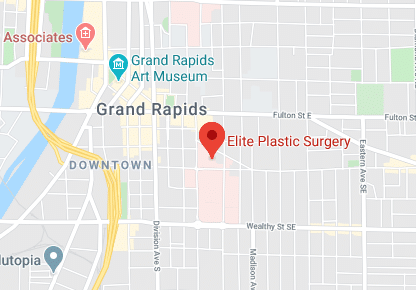
But with another great Great Lakes summer upcoming, the team at Elite would like you to think of another alphabet combo — A, B, C, D, and E. Those five letters are an easy way to remember five steps in identifying growths that could be skin cancer.
Living in a place with such ample water activities and outdoor possibilities, most of us are aware of the dangers presented by the sun. Gone are the days of slathering baby oil all over our bodies and lying in the sun for hours on end. Gone are the days of the Coppertone little girl and her famous tan line.
The key to beating skin cancer is to catch it early. Toward that end, here is some information about skin cancer that you maybe didn’t know, along with some ABCDEs to watch out for.
Who gets skin cancer?
It seems unfair sometimes, but one person is constantly getting her skin frozen by the dermatologist, while her darker-skinned friend doesn’t even know what the liquid nitrogen bottle looks like. Why is this? It all comes down to melanin. Melanin is the pigment in the skin that helps protect it from the sun. Melanin is what is responsible for turning the skin a darker tone (tanning) after receiving sun exposure. This is a protection mechanism.
The problem is, people with fair skin have less melanin, so they are less protected. The ultraviolet rays from the sun can alter the genetic material in skin cells, causing them to mutate into cancerous cells. It is estimated that 40 to 50% of people with fair skin (who live to be at least 65 years of age) will develop at least one skin cancer in their lives.
Different cancers
Squamous cell carcinomas and basal cell carcinomas are more common than melanoma, and they come from different types of sun exposure. Squamous and basal cell carcinomas are the results of the amount of overall sun exposure. Fair-skinned people who spend a lot of time outdoors will likely develop one of these two skin cancers.
Melanoma, the most dangerous type of skin cancer, isn’t thought to come from prolonged sun exposure, but from the intensity. It is believed that melanoma is triggered by the scorching sunburns where the person’s skin blisters and peels afterward. Research has shown that just one blistering sunburn during childhood doubles a person’s risk of developing melanoma later in life. Remember those trips to Sleeping Bear Sand Dunes where you got fried and then had to wear a T-shirt the second day? Those are the burns that eventually trigger melanoma.
Know your ABCDEs
These five letters can come in handy when looking for skin cancers on your skin.
- Asymmetry— If one-half of the mole doesn’t match the other half, that’s a concern. Normal moles are symmetrical.
- Border— If the border or edges of your mole are ragged, blurred, or irregular, that is a reason to see your dermatologist. Melanoma lesions often have irregular borders.
- Color— Normal moles are a single shade throughout. If your mole has changed color or if it has different shades of tan, brown, black, blue, white, or red, then it should be checked.
- Diameter— If a mole is larger than the eraser of a pencil it needs to be checked.
- Evolving— If a mole evolves by shrinking, growing larger, changing color, itching or bleeding, or other changes it should be checked. Melanoma lesions often grow or gain height rapidly.
With our Michigan summers, everyone needs to be aware of skin cancer. But if your dermatologist has found some skin cancer that needs surgical removal, trust the experienced team at Elite with its removal and subsequent reconstruction. Call us at 616-459-1907 for an appointment or with any questions.


No comments yet.